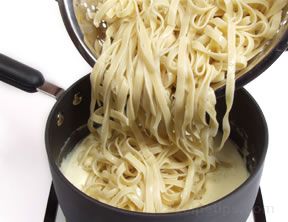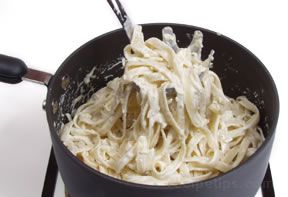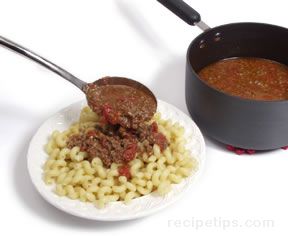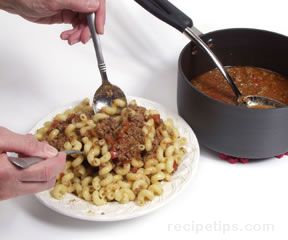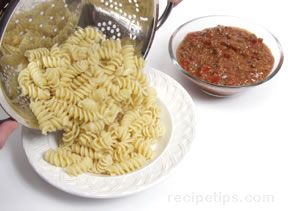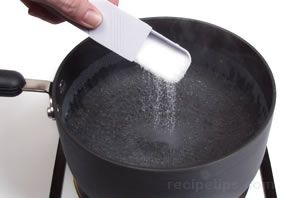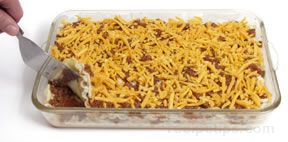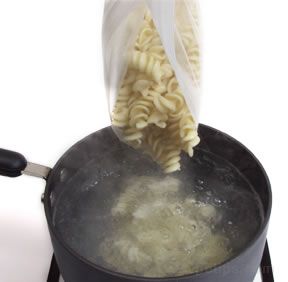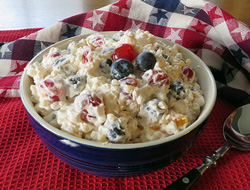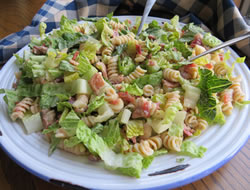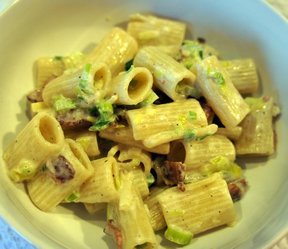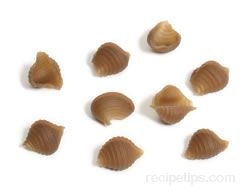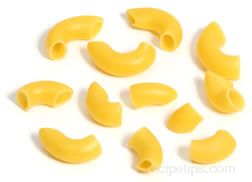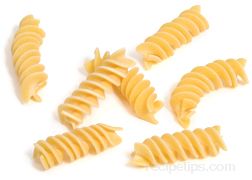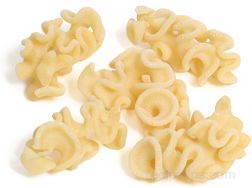Most pastas have a similar flavor but when the sauce is added, the pasta and sauce create their own unique flavor. There are many types of sauces that can be used but some go better with certain types of pasta than others. Some general guidelines for different types of pasta are shown below.
Shaped Pasta: Conchiglie, farfalle, fusilli, gemelli, gnocchetti, gramigna, lumache, lumaconi, orecchiette, radiatori, route, rotini, and trenne
Sauce: Thick tomato sauces, meat sauces, chunky sauces, and cheese sauces
Tubular Pasta: Canneroni, cannolicchi, cavatappi, garganelli, macaroni, maccheroncelli, manicotti, paccheri, penne, rigatoni, tortiglioni, and ziti
Sauce: Thick tomato sauces, meat sauces, chunky sauces, and thick cream sauces
Strand Pasta: Angel hair, capellini, chitarra, fedelini, spaghetti, and vermicelli
Sauce: Light tomato sauces, butter based sauces, light oil based sauces, and light cream based sauces
Ribbon Pasta: Fettuccine, lasagne, linguine, pappardelle, riginette, tagliatelle, and trenette
Sauce (For the wider dried pastas): Meat sauces, thick tomato sauces, and thick cream sauces
Sauce (For narrow or fresh pastas): Light tomato sauces, butter based sauces, light oil based sauces, and light cream based sauces
Soup Pasta: Acini di pepe, alphabets, anellini, conchigliette, ditali, farfalline, orzo, pastine, risi, stele, stortini, and tubetti
Sauce: Light sauces, mainly used in broth or soups with a light base.
Stuffed Pasta: Agnolotti, pansotti, ravioli, tortelli, and tortellini
Sauce: Light tomato sauce, light cream based sauce, and broth
Asian Noodles: Asian noodles, Asian wheat noodles, Asian rice noodles, bean thread noodles, cornstarch noodles, seaweed noodles, and soba noodles
Sauce: Generally not eaten with a sauce. Used in stir-fries, soups and salads.
The pasta should not be over-sauced. It only needs to be coated with enough sauce to allow the pasta to benefit from its flavor. There should not be leftover sauce in the bottom of the bowl when all of the pasta has been eaten. Shown below are some basic guidelines on adding sauce to the pasta.



